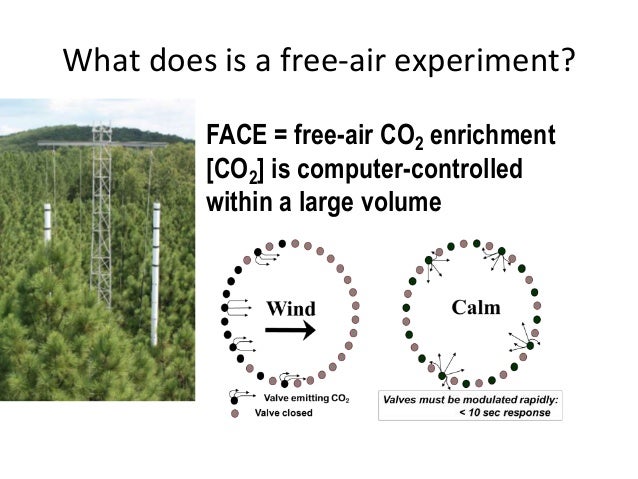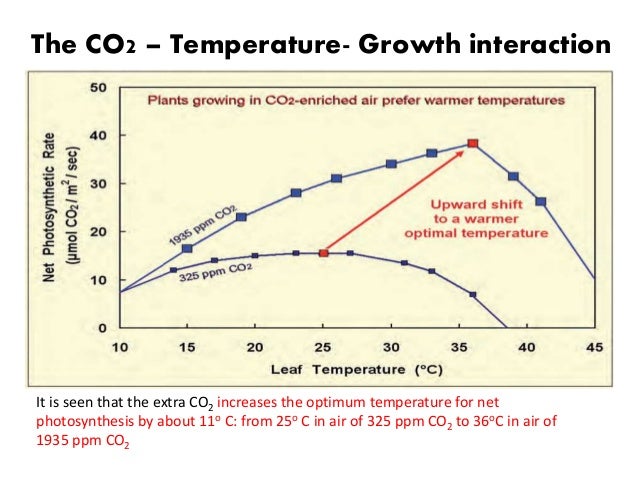Ok, my post title is over the top, exaggerating the certainty of my finding. And the moldy bread was the scariest image of spoiling food I could find. But I was provoked by the media awash with alarmist headlines:
Elevated Carbon Dioxide Levels Rob Crops Of Nutrients
Increasing CO2 threatens human nutrition
In an earlier post Researchers Against CO2 I reported on one line of research claiming crops suffer from more CO2 (against loads of studies showing how much plants love CO2). This is a more recent, more subtle attack, claiming the plants grow bigger all right, but the grains have less protein, and less micronutrients like iron and zinc. And of course, the remedy is for everyone to fulfill their Paris commitment to stop any further warming.

As with other alarming impacts, the evidence is much more nuanced, and the implications are not as dire as the headlines shout. And the countermeasures are practical and do not require global treaties. Many alarming reports have appeared in the last two years, a recent example being:
Elevated Carbon Dioxide Levels Rob Crops Of Nutrients
Some crops grown at elevated carbon dioxide levels have less zinc and iron.
The carbon dioxide levels in all of the included FACE experiments were around 550 parts per million, which is the projected atmospheric carbon dioxide level around the year 2050. For comparison, the carbon dioxide concentration at the start of the Industrial Revolution in the 18th century was 280 ppm, and April 2014 was the first time that global carbon dioxide levels climbed above 400 ppm for an entire month.
When the team analyzed their data, the results showed a significant decrease in the concentrations of zinc and iron as well as protein in wheat and rice cultivars. For example, zinc, iron, and protein concentrations in wheat grains grown at the FACE sites were reduced by about 9 percent, 5 percent, and 6 percent respectively, compared with wheat grown at ambient carbon dioxide. If people consumed more food to make up for the drop in nutrients there could be other health consequences, including increased obesity, Myers posited. “The ratio of nutrients to calories in the food is really important.”
Zinc and iron were also significantly reduced in legumes such as soybeans and field peas in the study, although protein was not.

Note that the reductions are small assuming the projected 2050 CO2 levels. It is also the case that other researchers see other factors at work. For example, Lieffering et al. 2004 (my bolds)
The impact of elevated CO2 on the elemental concentrations of field-grown rice grains
We analysed the elemental concentrations of archived grain samples collected from temperate rice crops grown under free-air CO2 enrichment (FACE) conditions. Like in the pot experiments, in our study elevated CO2 increased biomass and grain production and decreased grain N concentrations.
In contrast however, we found no changes in the concentrations of any of the other elements analysed. We thought it is likely that dilution was observed in the pot studies because nutrient supplies were limiting, primarily because of the small rooting volumes. In contrast, our experiment was conducted under field conditions, with highly fertile soils and large rooting volumes leading to plentiful nutrient supplies (especially micro-elements).
The root production response under elevated CO2 was more than twice the aboveground biomass response; we hypothesised that if this led to a greater relative nutrient uptake capacity, elemental uptake may have matched the increase in aboveground biomass and hence no change in concentration would be detected.
We conclude that a dilution of elements in the grain is not a foregone conclusion under elevated CO2: where elements are in plentiful supply and uptake rates can match increases in yield, no dilution will be detected.

A study by Saman Seneweera theorized about the mechanism that may be operating in nutrient-deficient grains. (my bolds)
However, the biochemical mechanisms of reduction in grain protein content at elevated CO2 are still unknown. Biochemical make-up of the plant was changed when plants were exposed to elevated CO2 for long periodlargely as a result of increases in photosynthetic nitrogen use efficiency. . . It is established that small-grained cereals like barley, wheat and rice may mobilize up to 90% of the nitrogen from the vegetative plant parts during grain filling; hence, overall less N investment in the plant at elevated CO2 could be the primary cause for reduction in grain protein concentration at elevated CO2.
In this experiment, no difference was found in grain macronutrients such as P, K, Mg and Ca . This experiment was quite different to other experiments as this study was conducted under sand culture up to grain maturity. In most of the other experiments where grain macronutrients concentration are studied, a large reduction in nutrients such as K, Mg and Ca has been reported, suggesting that this may be due to the restricted rooting volume. However, Lieffering et al. 2004 reported no differences in grain macronutrients under elevated CO2 under field condition with rice.
Both the experiments, ours with a constant supply of macro and micronutrients, and the Lieffering et al. experiment, were conducted under flooded conditions where availability of these nutrients is relatively higher as submergence enhanced the nutrient availability. However, when wheat was grown under dry land conditions (FACE experiment), this reduction in micro and macronutrient concentration was significant at elevated CO2. It is likely that macro and micronutrient management is required to maintain grain quality under elevated CO2.

Summary
Once again, in the real world, many factors other than CO2 influence the nutritional value of crops. And most of them can be managed as part of ongoing agricultural adaptation to changing circumstances.
The authors suggest that some of the nutritional deficits they observed could be counteracted through breeding programs that select for decreased sensitivity to carbon dioxide. For example, their results showed that zinc and iron varied substantially across different rice strains.
David Wolfe, a plant and soil ecologist at Cornell University in Ithaca, New York, said that in addition to reducing carbon dioxide admissions, other strategies include breeding for crops that take up more iron and zinc from the soil in elevated carbon dioxide conditions, or to diversify crops to include protein-rich legumes such as beans and peas or iron-rich spinach. The food industry could also fortify salts or other foods with iron and zinc, Myers added.

Single variable analysis in a complex system?
LikeLike
Right on Bob. Reminds one of treemometers. Really? Trees grow only because of temperatures–no love for rain, soil conditions, insects, etc.
LikeLike
Ron, it is true that Lieffering et al. 2004 didn’t find much of any declines. Their sample were tiny as was explained here: https://elifesciences.org/articles/02245
LikeLike
Valeria, thanks for commenting and for the link. Lots of complexities and statistical issues, it appears. I did not find the critique of small sample sizes re Lieffering, but the issue of pot vs. field studies is mentioned.
I am not conversant in the details, but note two things at the macro level. These studies are typically doubling the CO2 concentrations for these experiments, and the plants grow much larger, doubling in size in some cases. So the biomass is growing hugely (50 to 100%) because of C uptake, while nutrients are also taken up but at a lower rate than C. But the larger plant still has more nutrition in it than the smaller one. And as mentioned in my post, availability of nutrients can be managed.
LikeLike
Ron
Thanks for the posts. I find your views quite reasonable. I suspect that interest in food and its quality is greater than the usual Climate Etc. audience appreciates. If so, minor changes in food chemistry may turn out to be as valuable for the hysterics as have minor variations in temperature. Nutrition Science does not have a substantially better record for extracting signal from noise than does Climate Science.
LikeLike
Ron: This seems to be a bit more objective. It comes from outside my usual list of sources.
https://elifesciences.org/articles/02245
This all is a diversion from the far,far greater problem of poor nutritional choices in the first place.
LikeLike
Thanks for the link. The paper is quite thorough and well written. They acknowledge that a calorie-deficit person might need to eat 5% more to get the needed micronutrients and protein. Tacitly admitting that the nutrients are not destroyed by CO2, but are diluted in a larger plant stimulated by CO2.
LikeLike
An after thought: Many commercial crops today are grown in greenhouses where CO2 is enhanced up to 1000 ppm. I don’t recall any criticism of those plants’ nutritional value.
LikeLike
Ron, Politico had a big story calling it the Great Nutrient Collapse. Very convincing http://www.politico.com/agenda/story/2017/09/13/food-nutrients-carbon-dioxide-000511
CO2 is enhanced up to 1000pm in greenhouses and soil is enhanced with nutrients. This is not true for our mother earth. CO2 is creeping up while soil gets depleted. Imbalance as study of Loladze names it: http://www.cell.com/trends/ecology-evolution/abstract/S0169-5347(02)02587-9
LikeLike
Alarmist headlines are about as helpful as articles dismissing, rather than tempering, said headlines. It is incredibly important to note the c3 vs c4 crop reactions, and to also examine further evidence – such as the marigold examination showing the steady decline in nutritional value since the 1800s, or the reaction of oceanic plankton and algae under co2 expansion. Why? Because niche species can’t adjust like we do, and a cornerstone species dying out due to lack of nutrition can be catastrophic for the good chain. Additionally, while some plants will actually become more nutritious, the overall comparatives show declines – and those declines may result in various conditions in humans not unlike how zooplankton does with high co2-fed algae.
These headlines don’t claim anything alarmist, by the way – they state an objective truth: higher co2 is causing plants to be less nutritious. What IS alarming is just how few people understand why these results matter.
LikeLike
“At least 5 mass extinction events have profoundly changed the history of life on Earth. But a new study led by researchers at the University of Gothenburg shows that plants have been very resilient to those events.
For over 400 million years, plants have played an essential role in almost all terrestrial environments and covered most of the world’s surface. During this long history, many smaller and a few major periods of extinction severely affected Earth’s ecosystems and its biodiversity.
“In the plant kingdom, mass extinction events can be seen as opportunities for turnover leading to renewed biodiversity,” says leading author Daniele Silvestro.
https://science.gu.se/english/News/News_detail/plants-survive-better-through-mass-extinctions-than-animals.cid1273214
LikeLike
The links offer some compelling data driven information on this.
I feel differently about this than CO2-climate because it is not predicted by models, is based on following a question based on clear data, and suggests something that is true elsewhere: sweetspot or goldilocks ranges of micronutrients/ vitamins.
It would nit be completely surprising if bith sides in the CO2 climate issue are actually irrelevant.
That said, since it is well established that >CO2 = bigger better plants, how can it be that the (so far) trivial decreases in nutrition per unit be significant?
Are not paleo evidence of extremely abundant life in much higher CO2 regimes compelling evidence if much more to the story?
LikeLike
Cannabis oil for cancer has been tested countless times but it’s inconclusive to its effectiveness but one CO2 test with a tiny soil sample the results are conclusive without question?
LikeLike